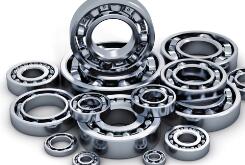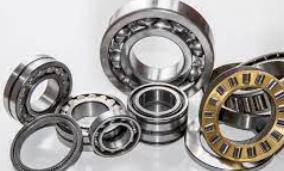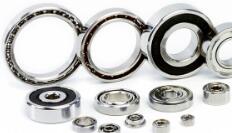Where to Find the Best Ball Bearings for Your Needs
Discover the top sources for high-quality ball bearings for your industrial and mechanical needs. Learn about the key considerations for price, quality, and quantity.
Ball bearings play a crucial role in many industrial and mechanical applications, yet finding the right one can be overwhelming.
This article will reveal the top sources for top-quality ball bearings and guide you through the key considerations for price, quality, and quantity.
Take advantage of this essential read for everyone in the industry!
1.Online retailers
2.Hardware stores
3.Automotive stores
Are you tired of sifting through countless suppliers and options regarding ball bearings? Look no further.
We also provide valuable insights on the key considerations for the price, quality, and quantity, giving you the tools to make an informed decision that will benefit your business.
Don't miss out on this comprehensive guide to finding the best ball bearings for your needs.
Introduction
Definition of ball bearings

Ball bearings are a rolling-element bearing that uses small balls to separate and reduce friction between the bearing races.
They are designed to support radial and axial loads and are commonly used in various applications, including automobiles, industrial machinery, and consumer products.
The basic design of a ball bearing consists of two races, or rings, that are separated by a set of small balls. One race is typically stationary, while the other is attached to a rotating assembly such as a shaft or hub.
As the rotating race turns, it causes the balls to rotate as well, reducing friction and allowing for smooth movement.
One of the key advantages of ball bearings is their low coefficient of friction.
Because the balls are rolling, rather than sliding, against the races, they experience less resistance and wear, making them more durable and longer-lasting than other types of bearings.
Additionally, ball bearings can tolerate some misalignment of the inner and outer races, making them well-suited for use in applications where precise alignment is difficult to achieve.
Despite their many benefits, ball bearings do have some limitations. For one, they have a lower load capacity for their size than other rolling-element bearings.
Additionally, they are not well-suited for use in high-speed applications, as the high centrifugal forces generated by the spinning balls can cause them to fly out of the bearing.
Several different ball bearings are available, each designed for specific applications.
The most common types include deep groove ball bearings, angular contact bearings, and self-aligning ball bearings.
Deep groove ball bearings are the most widely used ball bearing type and are suitable for both radial and axial loads.
Angular contact ball bearings, on the other hand, are designed to handle combined radial and axial loads and are often used in high-speed applications.
As the name suggests, self-aligning ball bearings can adjust to slight misalignments of the inner and outer races, making them well-suited for use in applications where precise alignment is difficult to achieve.
In conclusion, ball bearings are a versatile and widely-used type of rolling-element bearing known for their low coefficient of friction, durability, and ability to tolerate misalignments.
They are used in various applications, from automobiles and industrial machinery to consumer products, and are available in various types to suit specific needs.
Types of ball bearings

A. Steel ball bearings
Steel ball bearings are the most common ball bearing made from hardened steel.
They are durable and able to withstand high loads and speeds.
They are widely used in various applications, including automobiles, industrial machinery, and consumer products.
They can handle radial and axial loads and resist wear and corrosion.
They are cost-effective and widely available.
B. Plastic ball bearings
Plastic ball bearings are a lightweight and cost-effective alternative to steel ball bearings.
They are made from high-performance plastic materials such as PTFE and PEEK.
They are commonly used in applications where weight and cost are major considerations, such as in consumer products and medical equipment.
They are also used in applications where the presence of steel bearings is not desirable, such as in food processing plants.
They are not as durable as steel bearings and unsuitable for high-load and high-speed applications.
C. Ceramic ball bearings
Ceramic ball bearings are made from ceramic materials such as silicon nitride or zirconia.
They are lightweight and have a high resistance to wear and corrosion.
They are particularly well-suited for use in high-speed applications where steel bearings would be prone to failure, such as in aerospace and high-performance racing applications.
They are also used in applications where the presence of steel bearings is not desirable, such as in the semiconductor industry.
They are more expensive than steel bearings and not as widely available.
In summary, steel ball bearings are the most common and widely available ball bearing type, making them suitable for various applications.
They are durable, able to withstand high loads and speeds, and cost-effective.
Plastic ball bearings are a lightweight and cost-effective alternative but are not as durable or suitable for high-load and high-speed applications.
Ceramic ball bearings, made of ceramic materials, are lightweight, have high resistance to wear and corrosion, and are particularly well-suited for use in high-speed applications.
They are more expensive and not as widely available as steel bearings.
Where to buy ball bearings

A. Online retailers
Online retailers such as Amazon, eBay, and Alibaba are popular sources for purchasing ball bearings.
These retailers typically offer various ball-bearing products from different manufacturers at competitive prices.
Shopping online also provides the convenience of browsing and comparing products from the comfort of your home and having the products delivered to your doorstep.
However, it's important to ensure that the online retailer is reputable and that the ball bearings are good quality before making a purchase.
B. Hardware stores
Hardware stores such as Home Depot, Lowe's, and Ace Hardware are other common source for purchasing ball bearings.
These stores typically carry a wide range of ball-bearing products for different applications, such as automotive, industrial, and home repairs.
They also offer a variety of brands and sizes to choose from.
Shopping at hardware stores allows customers to physically inspect the product before buying and also provides the opportunity to consult with store associates for advice.
C. Automotive stores
Automotive stores such as Autozone, NAPA Auto Parts, and O'Reilly Auto Parts are great sources for purchasing ball bearings specifically for automotive applications.
These stores carry various ball-bearing products for specific automotive applications, such as wheel bearings, transmission bearings, and engine bearings.
They also carry a range of brands and sizes to choose from. Shopping at an automotive store gives customers confidence that the ball bearings they purchase are designed for the specific application they need them for.
In summary, there are several places to buy ball bearings, including online retailers, hardware stores, and automotive stores.
Online retailers offer convenience and a wide range of products at competitive prices.
In contrast, hardware and automotive stores offer the opportunity to physically inspect the product and consult with store associates for advice.
It's important to consider the specific application and quality of the ball bearings before making a purchase.
Considerations
A. Price
The cost of the ball bearing can vary depending on several factors, such as the type of bearing, the size, the material, and the brand.
It is important to compare prices from different manufacturers and suppliers to ensure that you get the best price for the bearing quality.
While a lower price may be tempting, it is important to consider the long-term costs, such as maintenance and replacement costs, when making a purchase decision.
B. Quality
The quality of the ball bearing is crucial to its performance and longevity.
Factors such as the material, precision, and manufacturing process can all affect the quality of the bearing
. Ball bearings are typically made from steel or ceramic, and the type of material used will affect the bearing's strength, durability, and resistance to wear.
The precision of the bearing also plays a role in its quality, as a higher precision bearing will have less clearance and run smoother.
The manufacturing process is also important as it affects the quality of the bearing.
A well-manufactured bearing will run smoother and last longer.
C. Quantity
The number of ball bearings needed will depend on the specific application and the number of devices that require bearings.
It is important to ensure that enough bearings are purchased to meet the application's needs while also considering the lead time for delivery.
If the bearings are needed for a specific project, it is important to plan and order them well in advance to ensure they will be available when needed.
Additionally, buying bulk can often result in cost savings, so it's important to consider long-term needs and purchase accordingly!
Conclusion
By following the tips outlined in this article, you'll be able to find the best ball bearings for your needs.
Whether you're looking for reliable suppliers, top-quality materials, or the best deal, this guide covers you.
Make an informed decision, save time and money, and ensure the longevity and efficiency of your industrial or mechanical application.





